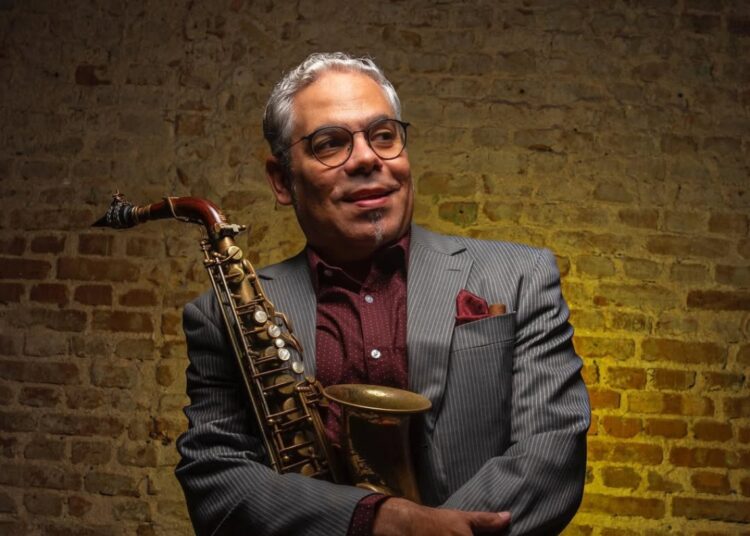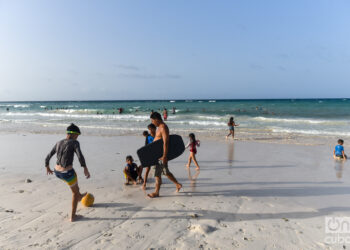There’s a place on Avenida del Puerto — number 52, between Jústiz and Obispo streets — that aspires to become a sanctuary for jazz in Cuba. It has a good chance of achieving this, although it hasn’t yet opened its doors. The lack of spaces in the city with a stable program of the genre, despite the abundance of projects and artists cultivating it, hints at the success a place like this can have in the capital city.
The César Jazz Club is almost a reality. It will be the realization of a dream nurtured for years by Cuban saxophonist and composer César López and his wife, Seiko Ichii. Friends, collaborators and institutions such as the Office of the City of Havana Historian (OHCH), a key entity in determining the club’s location, have joined the effort.
It boasts a privileged location, blessed by the breeze from the Havana Bay; its wide sidewalk is a must-see for locals and tourists, and it borders a parking lot. The building — the club will occupy the first floor; above it there are six family apartments — is already nearing completion, and its creators hope to open the business next July.
“This is a project for Cuban musicians,” is the first thing César López says when we sit down to talk about the challenge of carrying out this endeavor and his plans for the future. The OHCH classifies the property at the corner of Obispo and San Pedro (Avenida del Puerto) as a Grade 2 protected building.
“Imagine that Grade 1 is for buildings like the Capitol or the Bacardi building. This building has a high heritage value; it’s a 19th-century construction, and the surroundings are very conducive to everything we want to do here,” explains the Cuban musician, who approached the OHCH with the project seven years ago.
Initially, he clarifies, he didn’t plan to manage such a large space. “After they accepted the project, they invited us to see four locations and first took us to the one they thought would be the best. When we got here, we decided we didn’t want to see the others. This was it.”
The building has three floors: the ground floor houses the César Jazz Club, and the upper floors are divided into six family apartments. To undertake the plan, César had to carry out major renovations to the building, respecting certain conservation parameters, for which he enlisted the help of Restaura, a company from the OHCH.
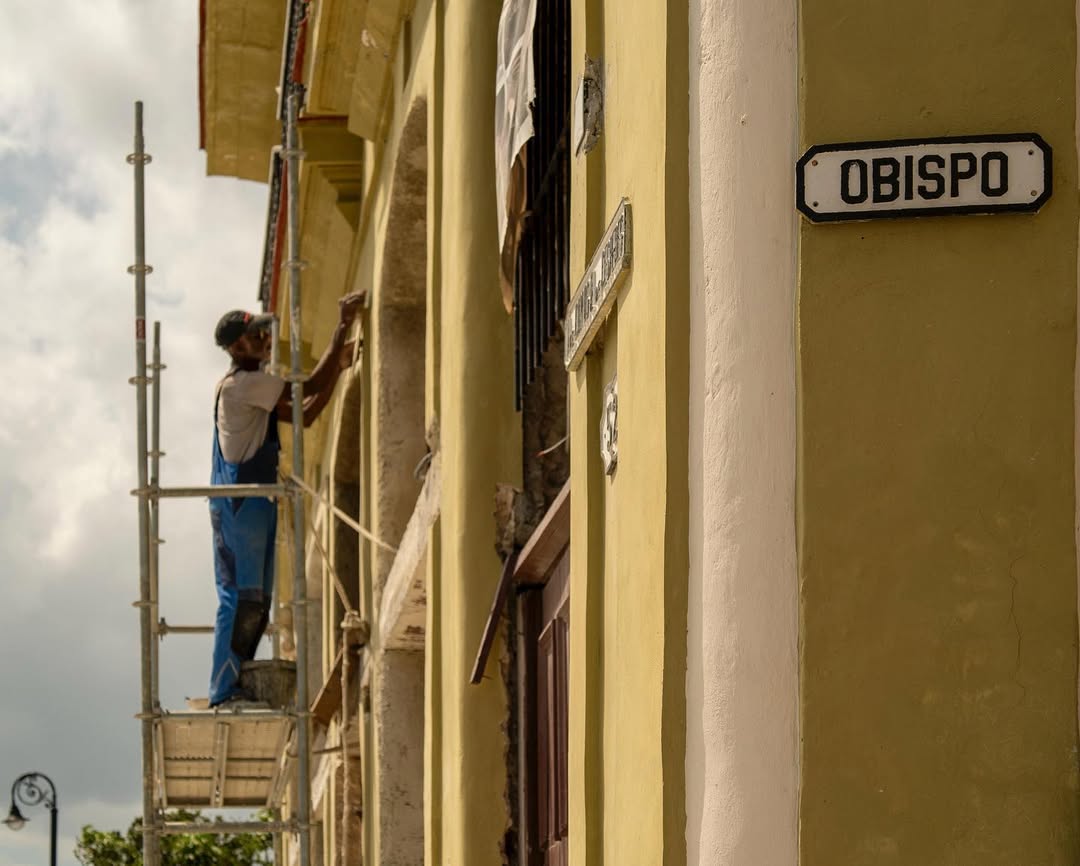
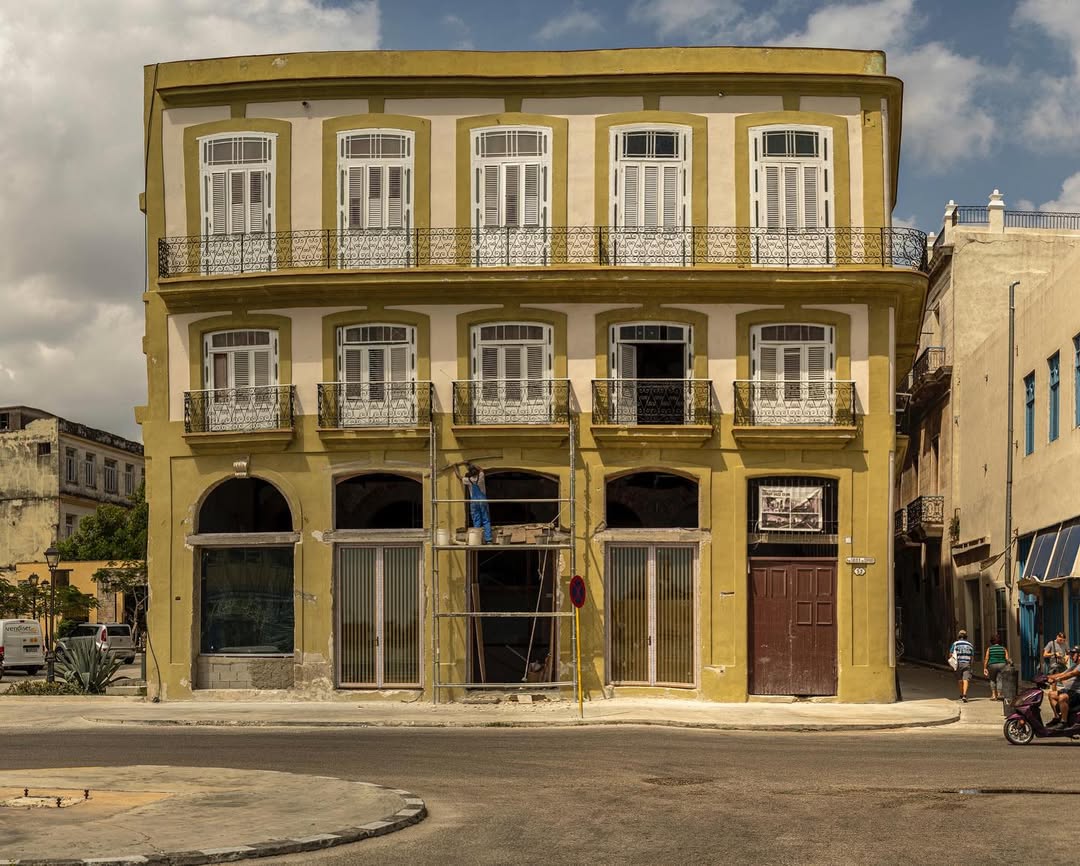
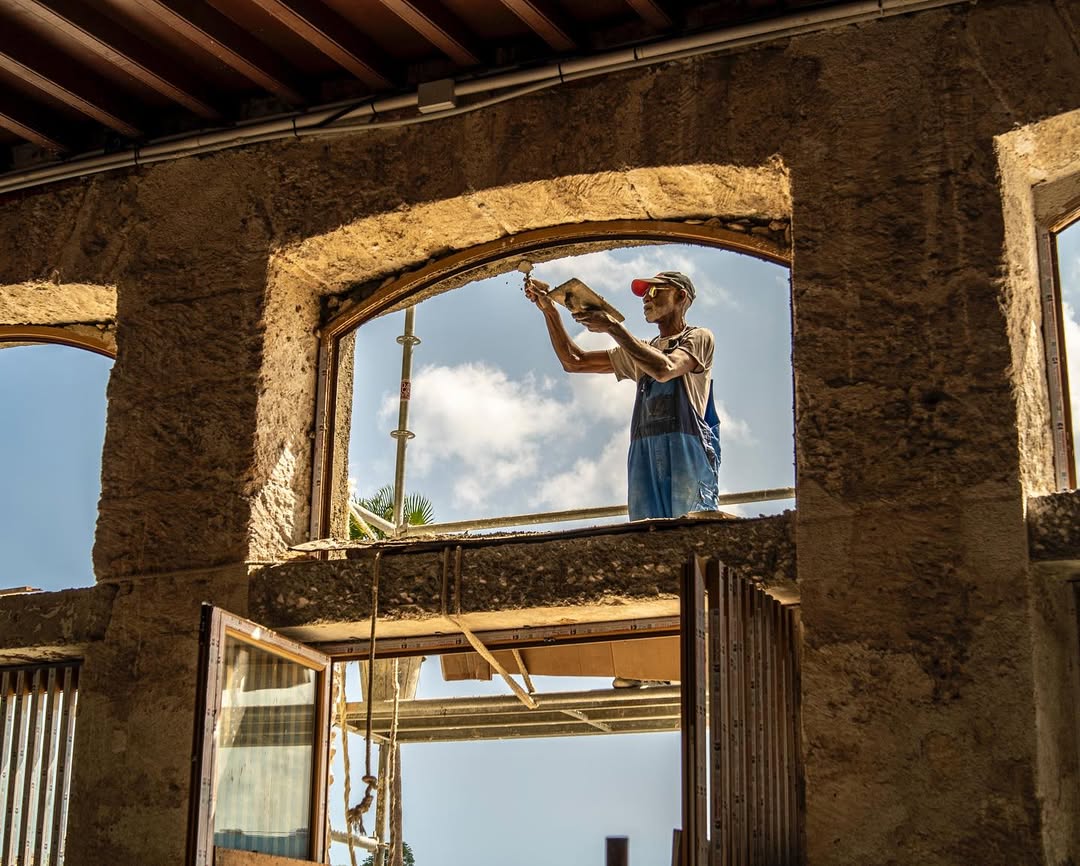
“This place has an old beauty that is visible to everyone. Everything has been restored. Like any heritage property, it has its own restoration and maintenance method, respecting its history, what this place was. That’s what was done here, regardless of the work done, such as the mezzanine, which didn’t exist. The place has become so beautiful and has been done with so much effort that the possibility of nominating it for a national restoration award has been raised. We’ve had the support of a great team, who have supported my wife and me; especially her, who has been the soul of this. I’ve followed her.”
According to César López, the building’s history is as old — about 200 years — as it is varied in its uses. “I believe one of the building’s first uses was as a home for nuns. Later, as it was located at the entrance to the bay, it served as lodging for sailors; in the 1980s and 1990s, tobacco leaves and boxes were stored there. The last thing, when I arrived here, was a carpentry shop and a blacksmith’s shop; it was badly neglected, unsanitary, and no one who worked here had even the slightest affection for the history of the place. Anywhere in the world, a two-century-old site deserves respect.”
The construction process, he says, has lasted two years and four months. “It’s gone quite quickly, considering it’s a major restoration,” he clarifies.
“We were also involved in the repair of the building’s six apartments. We found them in critical condition; there were people who couldn’t walk around their home because the floor was falling down. That floor is my roof. We received very important support from the OHCH, which provided us with the opportunity to house them for a year in temporary housing the institution has for these types of cases. In one year, we completely renovated all six apartments. The families have now returned to their homes. It has been a joy for everyone.”
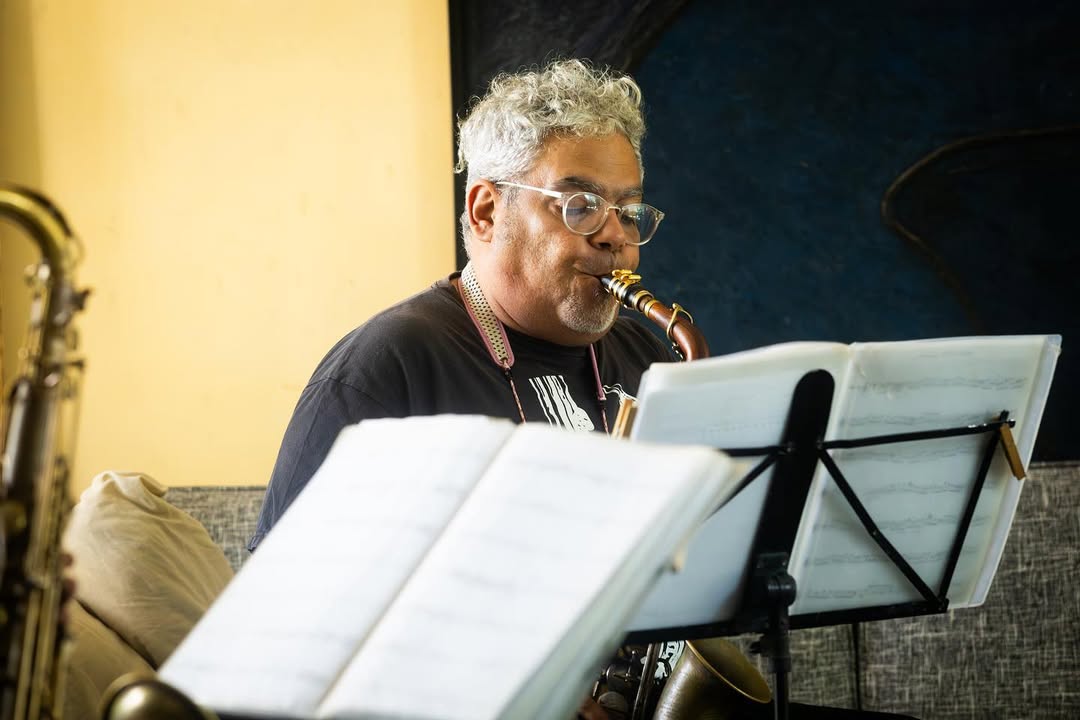
Will you have a resident jazz band?
The jazz band is the house orchestra and will play on Thursdays. My most recent album has precisely the format that will be played here; it’s called Habana Ensemble Jazz Band. It’s a format of three saxophones, three trumpets, two trombones and the bass. We’ll start by playing the repertoire from that album, because the arrangements have already been done. We’re also planning on inviting artists to perform with the orchestra.
We’re thinking about doing two shows a day, because that’s how things are working around the world: the entire Blue Note chain, all the big clubs. I’ve been to all those places and seen what it’s like.
How did you design the sound in this venue? I imagine this has been a particular concern for you.
I consider myself a fairly affable and understanding person, but I’ve lived my whole life fighting with sound engineers. That’s one of the things I’ve been very picky about in this place. The sound quality in the venues in Cuba is usually terrible, because the equipment is old, doesn’t work or isn’t properly operated. There’s a policy in many orchestras — and musicians who like it, or who demand it — of playing very loud and strong. That undermines quality. I’ve suffered from these things and have learned, little by little.
The sound system purchased for this venue is optimal in every way, including loud speaker equipment, a digital console and microphones. We’ve even been fortunate enough to have friends who have taken an interest in the project and donated the digital console, for example. The microphones were purchased in Japan through crowdfunding.
The venue has perfect acoustics; a lot of work has been done to achieve this. The ceiling has been soundproofed; it’s a high-pitched venue, with no natural reverberation, and it’s somewhat dry, which is important. Plus, when the venue is full, it will absorb more sound, allowing the sound engineer to work more freely.
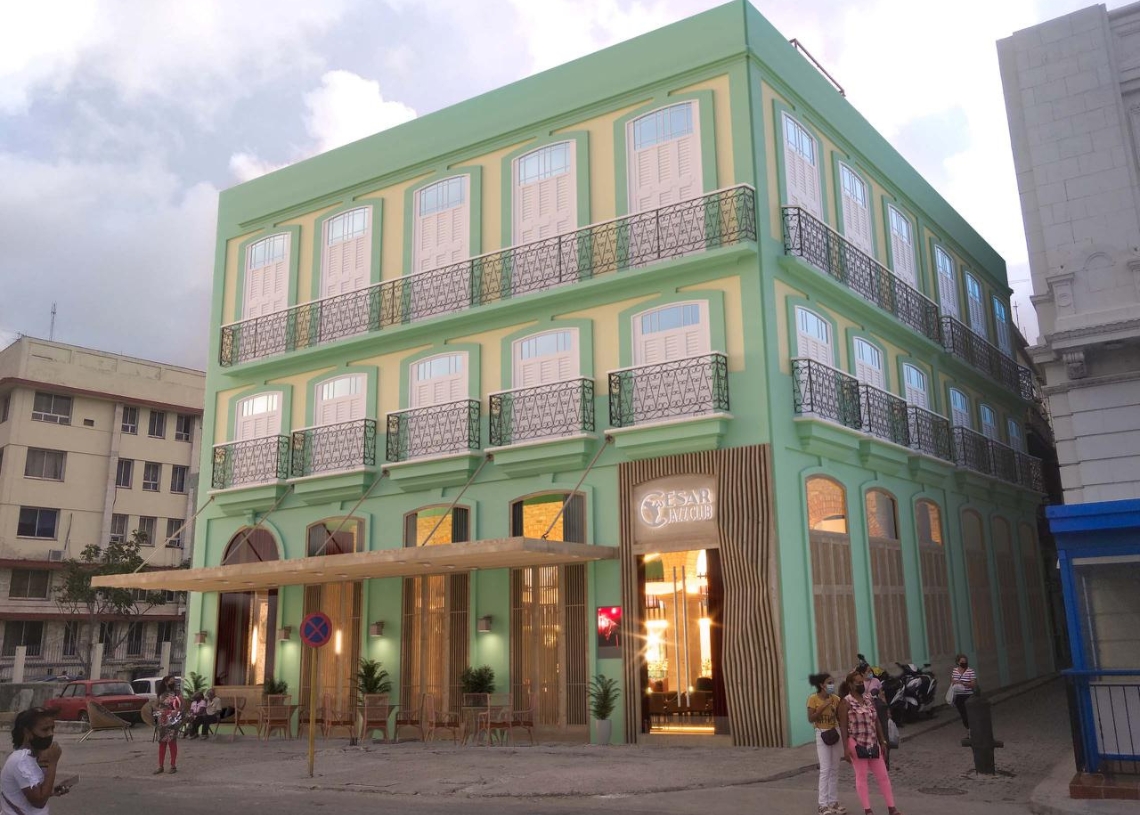
When faced with new challenges, is it more difficult to compose, perform, or be an entrepreneur?
Music is closely linked to my life. It’s a way of life because I’ve been studying it since I was 10, and today I’m 57. I’ve been earning my living this way for many years.
Being an entrepreneur is something I greatly respect, and for me it’s quite complicated. In fact, I don’t consider myself an entrepreneur; I consider myself someone who’s taking their first steps in this world of management.
It’s a stage in my life that has arrived now, one that I think we’re taking very seriously. I’m completely sure that everything will turn out very well, because we’ve never taken a step without consulting with more experienced people, learning from them. I think everything is turning out well because of that: because we did it with great caution, integrity and respect.
In your life, in your career as a musician, did you ever envision the possibility of carrying out a project like this at some point?
Yes, I had considered it some time ago. I even thought about opening a jazz club in my house, but my wife immediately refused (he smiles). Even that crossed my mind. What I never imagined was that we would achieve something as impressive as this, in a place like this.
You’re one of the prominent faces of jazz in Cuba, with notable international recognition. You even aspire to make this club a worldwide reference. What’s your assessment of the international jazz scene, in which Cuban musicians are inserted?
There are events in the world that have marked a before and after for humanity. Sadly, COVID-19 was one of them; getting the engine of humanity running again took a lot of effort. Many things, both material and spiritual, deteriorated. The festival circuit hasn’t been the same since then; neither have the agencies that book artists, and it’s all related to economic issues. So, it’s harder for musicians to make a living. In Cuba, of course, we’ve been hit hard by it, and it’s no secret that the venues where we used to play aren’t what they used to be.
It’s a spiritual disaster that humanity is suffering, along with the deterioration of the arts caused, in part, by many media outlets. Mediocrity has been gaining ground, it’s become normalized, and Cuba is no exception. You know all the music you hear out there — I don’t want to get into trouble (he smiles). It’s very bad, and that’s created an atmosphere of widespread stupidity: more people are consuming junk.
This place isn’t about going to war with that. We want to offer an alternative for people who want to consume a different kind of art. We want musicians to have a place where they can truly express what they want. Do you know how many people, to make a living, have to make concessions and play something they don’t like? That’s what they studied. I don’t know anything about trades, or carpentry, or plumbing, none of that. I studied music and I make a living with it.
I imagine the shock for the industry was huge when the pandemic ended and spaces like La Zorra y el Cuervo lost their vitality…
The Jazz Café disappeared. I was the founder of both. They were quite similar to what a jazz club should be, because they had programming — La Zorra y el Cuervo continues to have it — a series of conditions, and they were places that created a space for musicians to express themselves. La Zorra y el Cuervo had its moment of splendor, but this isn’t it.
Talking about this stage of your life is a pretext to talk about your personal history, your development as an artist. You said earlier that jazz is, for you, a way to unburden your soul. How do you do this on stage?
Some people think that artists unburden themselves when they get on stage, but that’s not quite the case. From the moment you start practicing daily, you’re doing it; when you’re composing, as well. The thing is that the stage is the peak moment, where all those emotions that had been building up come to the surface. That’s in the soul. There are composition processes that can last months; it’s a time when you’re living with that idea and those feelings.
What feelings does Irakere evoke in you, 50 years after that phenomenon you were a part of, and at the height of your development as an artist?
Irakere was the best. We’re talking about a band that revolutionized music, and not just in Cuba. I can sense it because I started there when I was 19. It’s the orchestra of the great Cuban maestros, and I confess that when I joined, I didn’t feel up to playing there. But I quickly acclimated and Chucho saw it: he saw the conditions and possibilities. Being a part of it was so powerful that I still feel like a member of Irakere.
When they celebrated their 50th anniversary, I felt such great pleasure knowing they’re still alive, but also a certain frustration because I couldn’t be at that celebration. I don’t know why, but none of the artists who were in Cuba, who were fundamental at certain times in the band — I’m from the third generation — were invited. I’m talking about Enrique Pla, Germán Velazco, Orlando Valle “Maraca,” myself…. I imagine it has to do with financial adjustments, that they would have to spend more money on us, and it was easier to choose musicians who were in the United States and could do that work.
I felt a little disappointed, even musically, with the work that had been done over the past 50 years, because Irakere was a band of sustained work, a band that dedicated a lot of time to rehearsal and practice, due to the complexity of the music being performed. Irakere was never built for the moment, so a sort of “you can come” made for some gaps in the sound signature of a band that was unique and unrepeatable.
You participated in the tribute album Los Herederos. Homenaje a Chucho Valdés e Irakere (EGREM, 2022), for which you composed some of the pieces. Do you dream of being able to make a specific tribute to that stage of your life?
Absolutely. The legacy that Irakere left, not only globally but also personally, is something I will always defend. Irakere is a tattoo I have on my heart, one that only I can see. That, for me, has such a strong, such a profound meaning.… One of the most transcendental moments of my life was playing with Chucho Valdés, with Oscar Valdés, with Carlos del Puerto, with Carlos Emilio, Enrique Plá, Carlos Averhoff, Jorge Varona. That will never be erased, not even if I wanted to. And, of course, I don’t want to.
What remains in César López of the child he was, the one who came from Camagüey and didn’t like the saxophone at the beginning of his studies?
I consider my life to have been very beautiful, and it all starts with family. I had wonderful parents — I’m an only child — and they were very protective of me, but a protection deeply tied to feelings, love, affection and spiritual support throughout. My family was crucial throughout my career, and everything took off almost unexpectedly.
I was a child troubadour; when I was 11, I won the first Children’s Troubadour Festival in Cuba. I played guitar and sang. Then I began studying music; the saxophone was somewhat traumatic at first because I wanted to study guitar. They assigned me to that instrument without consulting me, but over time I embraced it. That’s why I believe so much in the choices of destiny.
I studied at the Luis Casas Romero Vocational School of Art in Camagüey. It was a wonderful time. There I christened two Selmer Mark VII saxophones, the best brand in the world. The teachers were incredible, with solid training. Then I entered the National Art School (ENA), where I experienced the greatest joys I’ve ever had. And then, the Higher Institute of Art (ISA), which I didn’t finish because I joined Irakere.
I fondly remember my teachers: Miguel Villafruela — the first Latin American to graduate from the Paris Conservatory — and Mario Lombida, who was my teacher at the elementary level and took care of weaving my life as a musician, stitch by stitch, with incredible tact. Then, Jorge Luis Almeida, at the intermediate level, who graduated me as a professional. All this journey gradually showed me little by little the possibilities.
At 16, I started playing with Bobby Carcassés. At 19, I joined Irakere. Everything got more complicated. At 28, I started my own project. These were unexpected things that opened other doors. Now I’m 57 and I’m going to found my jazz club. I want this to be a temple for Cuban jazz.

Are you excited?
I’m so immersed in the development of all this that I don’t know if what I feel is excitement, devotion…. It’s a greatness I feel, alongside my wife, who has been the most important pillar of all. This is incomparable and I can’t summarize it in one word or emotion.
I imagine Cuban Sax Quintet will be another of the projects we’ll see programmed here.
You’ll sure to see it, because it’s one of the most exquisite projects this country has. Cuban Sax Quintet came about while talking in a bar — at Abdala Studios. Maestro Germán Velazco was recording in one studio and I was in another. By chance, we met during a break, having a beer in the studio’s bar.
That’s when we started talking about making an album, not a permanent project. The conversation took on unexpected dimensions, and two months later, Germán told me we should start composing for the album. We looked for the other three members. Of course, maestro Alfred Thompson, a composer of stature.
We made the first album with compositions by all three of them. And it turned out that album took off — winning the 2019 Cubadisco Grand Prize — and was later nominated for a Latin Grammy that same year. We decided to continue.
Then came the next album, which also received several awards. They are unique productions, tremendously exquisite. We even played in one of the most prestigious venues in the world: the Tchaikovsky Concert Hall in Russia. Germán is the most experienced musician in the group and, of course, he had to be the leader.
You joined Irakere replacing Germán Velazco.
I replaced Germán, and he had joined for Paquito D’Rivera. Coincidentally, we’re ten years apart in age. When I took over the music stand, things were already heated (he smiles), because those who passed through there were the best.
How do you define yourself creatively right now? Are you composing?
Right now, I’m involved in a trance that has kept me away from composing, due to this whole construction process. This has taken a lot of time, a lot of sacrifice; it’s a very significant investment of money, mental and emotional effort. I haven’t been able to recover the creative rhythm I had before starting this, but I’m convinced it will reactivate again, and with even greater force.
You’re inseparable from cigars. Where does that taste come from?
I’ve been smoking cigars since 2002, and for me it’s become a necessity. I have breakfast and light a cigar, lunch and light a cigar. It’s something that, of course, has an impact on my health, but it even helps me in my processes. That smell… I smoke at least three cigars a day. I was a Cohiba ambassador and I’m closely involved with events organized by Habanos S.A.
Have you already decided on a date for the opening of the César Jazz Club?
We’re close to the completion stage, but we’re proceeding cautiously. If we’ve put in so much work to create something as exquisite as this, we’re not going to forget now and overlook the details. We can’t do that, especially if it’s a place that could be nominated for a National Restoration Award. Whether it wins the award or not doesn’t matter; at least they thought of us.
That happened to me when I was about to enter Irakere: when Chucho auditioned me, I was very nervous. Then I spoke to myself and said, “You’ve already won, whether you get in or not.” So, we’ve already won with this restoration, with the beauty of this place. Now, why rush and not finish the little details so the cycle can close? We think our inauguration will happen in July.
If you had to define this entire construction process of the César Jazz Club with a song by Irakere, what would it be?
“Misa negra.” That piece has Afro-Cubanism so deeply embedded within it, in its history, and this is a place with a lot of history. And there’s a part of that piece, the alto saxophone piece, that I played many times, very sublime and passionate. This place has that too: the sublime in those rustic walls that have survived centuries.
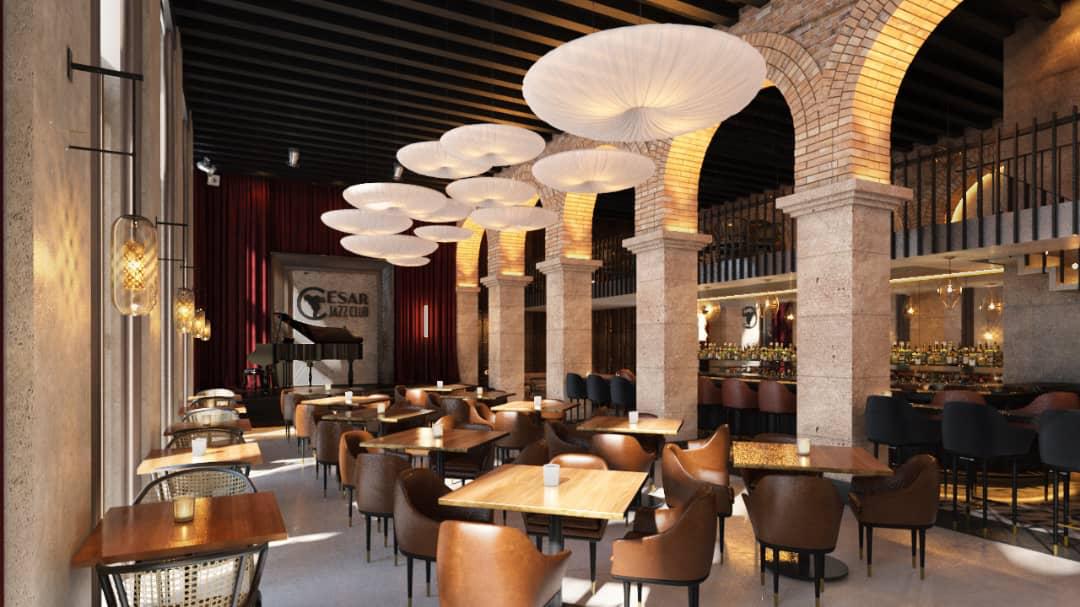
Sitting here, in your place, with the Bay of Havana in front of you… Do you see the future of this space projected in five or ten years?
Since we put the first brick here, every day I imagine how this place will function, how it will transcend. I’m sure it will become an icon, a temple of Cuban jazz. It’s in Havana, but it’s for the world.

